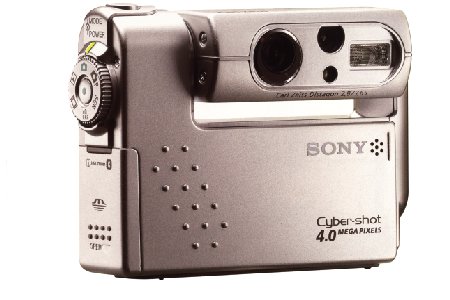
Go Digital
Issue 2 Nov / Dec 2003
Why a digital camera?
Remember only a few years ago, when APS compact cameras were all the rage – you know, the wide, panoramic photo sizes and automatic indexing and dating? Who talks about them now? We need to be conscious that in order to survive, companies such as Fuji and Canon must continuously develop and market their technologies. That way they can churn out newer, flashier cameras, and mesmerise you into believing that last year’s award-winning £500 camera needs to be tossed out or given away as a toy to your four year old nephew, making room for the next big thing. But cast your scepticism aside for one moment.
If you were told that we have moved from petrol cars to electric cars and they are just as fast but cost a quarter of the money to run, you would have to accept that this is a radical change and deserves a closer look. Well, with digital cameras, we are talking about revolution on just such a scale.
The difference boils down to time, hassle, money and CREATIVITY.
The basic change is that photos are taken and immediately stored as a graphics (jpeg) file on the camera’s memory chip. This way, the photo is already processed and you can view it immediately, on the small screen that comes with the camera, or if you have a computer handy, you can just zap it across via a cable and see it full screen.
Once on the computer, the possibilities are endless: you can transform the photo using any of the hundreds of graphics editing packages. With the click of a button, you can brighten, darken, add colour, sharpen, reduce red-eye. You can even cut out the background and transfer your kids to an island paradise! Your picture can be transformed to perfection and emailed, presented in a slide show, or burned onto a CD and sent to a friend or relative. Almost every photo developer these days will be happy to take your CD, ask you which files you want developing from it, and convert them to conventional photos at the same cost as a film reel.
Economy
In the long run, digital cameras work out MUCH, MUCH cheaper: your film is a memory chip (called a ‘card’), which can be erased each time the pictures are safely transferred to a computer. i.e. the film is free! What’s more, the processing is free too! Remember the photo is processed and ready for action the moment it is taken. The only cost is printing.
With digital photos, you screen, modify, perfect your photos first, before sending them to the developers. You know exactly how they will look when they come back from the shop. If you want five copies of a particular shot, simply copy the file under five different names, no additional cost. You don’t have to print out all your lessthan- prefect shots. You can do so much more with your photos on computer you will find yourself less and less inclined to pay a trip to the developers for paper copies. The digital camera has saved you time and inconvenience.
Creativity
Memory cards are becoming cheaper. A 256 megabyte card costs less than £50 (over the internet). On this you can store 220 good quality and 120 finest quality photos at a 4 megapixel (MP) sharpness (which is so fine that you could blow the picture up to A4 size and it will still look crisp). At 2 megapixels, which is easily sharp enough for a good 6”x4” print, your 256MB card will store 440 good quality pics and 240 finest quality ones.By film reel standards, these figures are simply mindblowing. What this means is that before one ‘change of reel’ (card download), you can now take up to 12 times as many photos with your digital camera. Now you can take as many photos as you like, with no cost attached. You can take all those crazy, weird, arty shots you used to think would be a waste of money; you can explore all the buttons and options on the camera and see immediately what effect they have. There is instant feedback on your experiments, so your learning curve is dramatically steeper.
Bookmark this |
|
Add to DIGG |
|
Add to del.icio.us |
|
Stumble this |
|
Share on Facebook |
|
Share this |
|
Send to a Friend |
|
Link to this |
|
Printer Friendly |
|
Print in plain text |
|


Comments
0 Comments